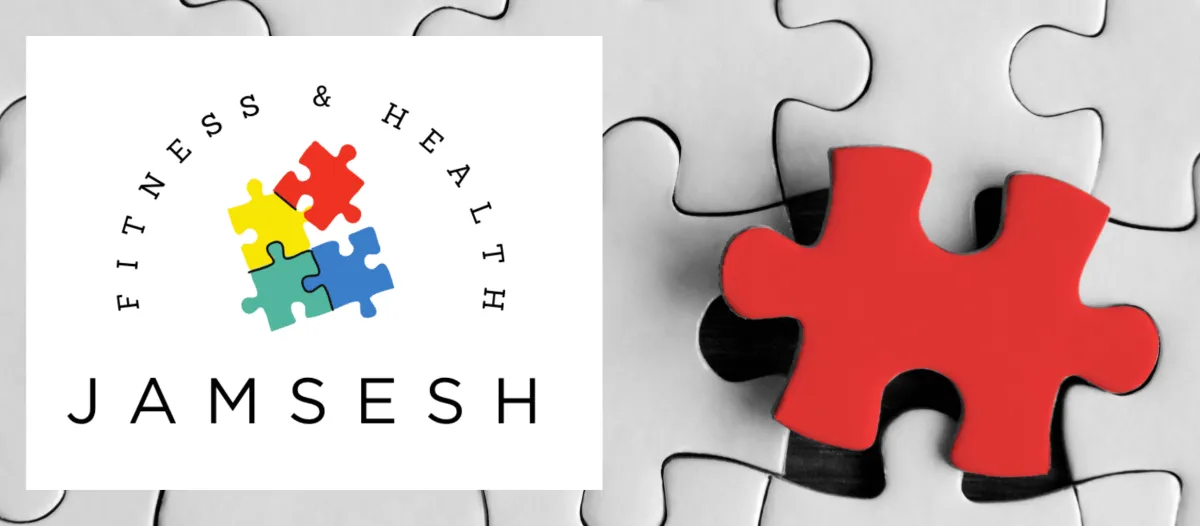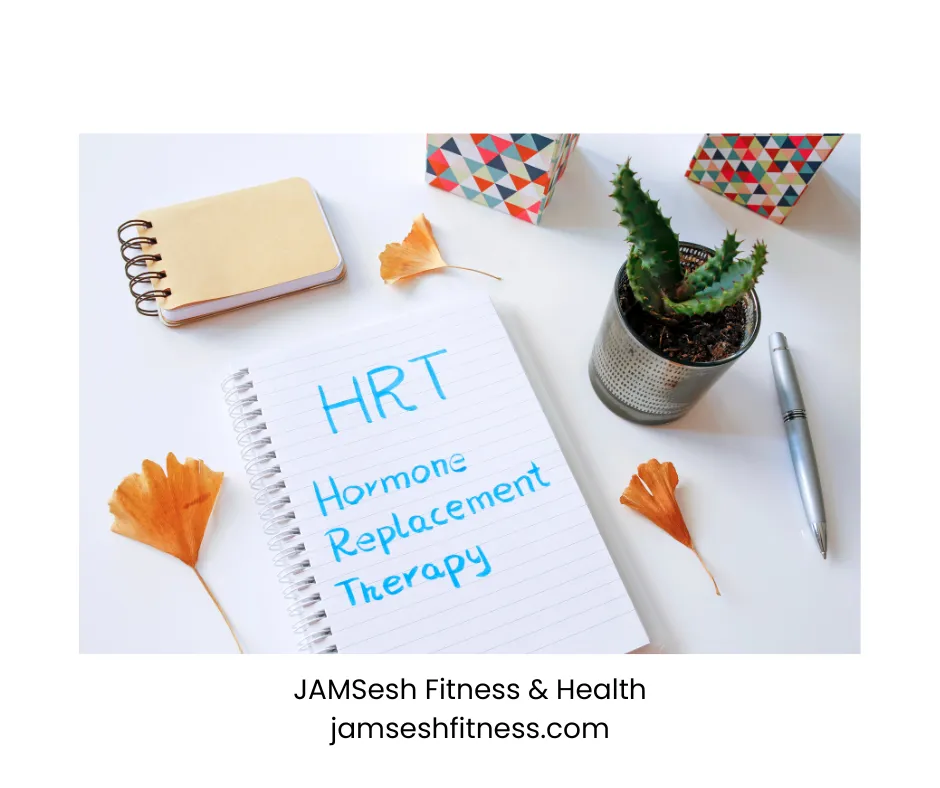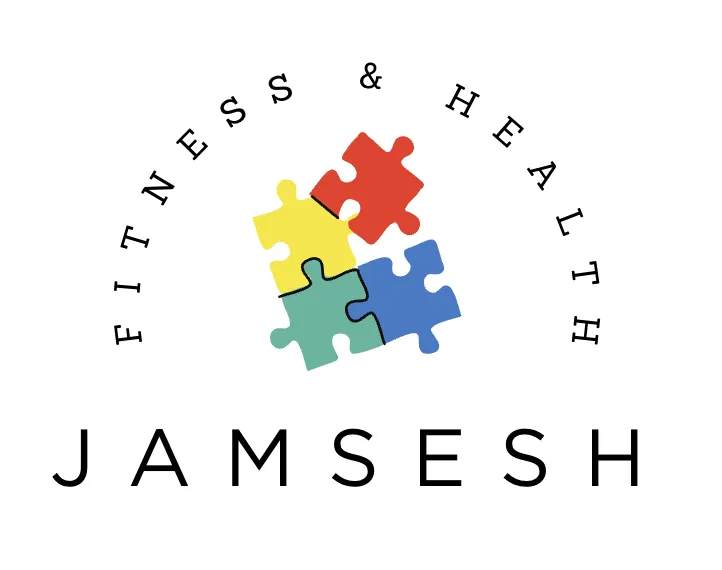J A M S E S H
Julie-Anne Minerals
Sleep Exercise Stress Hormones
Where We Put All The Pieces Of Your Puzzle Together

Knowledge is Your Super Power

Before You Start HRT: Liver, Estrogen & Mineral Balance
Hormone Therapy Is Not The Villain. But It Is Not A Free Pass Either.
Right now you’ll see two extremes:
“Hormones are dangerous, never touch them.”
“Your hormones are low, just get on bio-identical HRT and you’ll feel like your old self.”
Neither extreme is honest.
Menopausal hormone therapy, when used appropriately, can be incredibly helpful. The North American Menopause Society’s 2022 position statement makes it very clear that hormone therapy is the most effective treatment for hot flashes and vaginal symptoms and helps prevent bone loss and fractures, especially when started in healthy women under 60 or within about 10 years of menopause.
So this is not about demonizing HRT.
This is about asking a better question:
“Is my body ready to handle hormone therapy, or am I stacking more pressure on a system that is already overloaded?”
Because if liver, gut, minerals, and detox are struggling, you can absolutely still feel estrogen dominant, inflamed, and miserable on “perfect” bio-identical hormones.
TL;DR:
Bioidentical HRT is not “good” or “bad,” it is a tool. It can feel amazing when your foundations are in place, and it can backfire when they are not. Before (and during) HRT, you want to make sure:
Your blood sugar, insulin, and inflammation are under control so estrogen and progesterone are not pouring onto a metabolically stressed system.
Your liver, bile flow, and gut can actually process and clear hormones instead of recirculating “dirty” estrogen.
Your minerals are balanced (especially copper, zinc, magnesium, sodium, potassium) so your cells can respond properly to hormones, not just have more of them floating around.
Your thyroid and adrenals are supported, so HRT is fine-tuning, not trying to fix an exhausted system.
This is why I use HTMA plus bloodwork to “test, not guess,” build strong foundations, and then layer in HRT or natural hormone support in a way that actually works with your body, not against it.
How Estrogen Moves Through Your Body (And Why Your Liver Is Front Row, Not Background)
Any estrogen you make or take has to go through a specific path:
Liver metabolism
Estrogens are processed in the liver through phase I and phase II detox. They are hydroxylated then conjugated (glucuronidation, sulfation, methylation) so they can be excreted.Packaging for exit
Conjugated estrogens are then sent out in bile into the intestine or into the bloodstream where they are filtered by the kidneys and leave through urine.Gut processing and possible recirculation
In the gut, bacteria with beta-glucuronidase can deconjugate estrogen, which essentially “unpacks” it and allows it to be reabsorbed back into circulation. This is part of the estrobolome, the gut-estrogen axis.
If your liver is sluggish, bile is thick, digestion is poor, or bowels are slow, you do not clear estrogen efficiently. You change:
How long estrogen and its metabolites hang around
Which metabolites are dominant
How much estrogen is re-absorbed instead of excreted
Clinically, that often looks and feels like what people call estrogen dominance: breast tenderness, heavy periods (if cycling), weight gain, mood swings, migraines, histamine flares, skin issues, and the “PMS all month” feeling.
You can absolutely experience that picture with or without HRT. Adding hormones without supporting this clearance system can amplify an already unstable pattern.
Route Matters: Oral Versus Transdermal Estrogen
The way estrogen enters your body changes its impact on the liver and clotting system.
Oral estrogen goes through first-pass metabolism in the liver.
Meta-analyses and large observational studies show that compared with transdermal estrogen, oral estrogen is associated with a higher risk of venous thromboembolism (VTE) and deep vein thrombosis.Transdermal estrogen (patches, gels) largely bypasses first-pass liver metabolism and appears to carry a lower clotting risk, particularly in women with VTE risk factors.
NAMS and ACOG both acknowledge that transdermal routes and lower doses may reduce the risk of VTE and stroke compared with standard-dose oral preparations.
Translation for real life:
The liver is not a side character in hormone therapy.
The more you ask it to do (other meds, alcohol, high toxic load, poor nutrition), the more intentional you need to be about route, dose, and overall load.
“Bio-identical” Is Still Hormone, Not A Hall Pass
You will see the term “bio-identical” used a lot in marketing. It sounds cleaner and safer, but at the end of the day, it is still hormone therapy. The label itself does not fix blood sugar issues, a sluggish liver, poor bile flow, gut problems, or mineral imbalances. If the foundations are off, even the most “natural” hormone can feel like too much for the body to handle.
Estrogen And Copper: Why Mineral Balance Matters
From a mineral and HTMA lens, estrogen does not float through the body alone. It interacts with copper and liver proteins.
Decades of research have shown that:
Estrogens, including contraceptives and estrogen therapy, increase serum copper and ceruloplasmin.
Clinical lab references note that pregnancy, birth control pills, and estrogen therapy commonly raise ceruloplasmin levels.
If someone is already showing copper dysregulation or suspected bio-unavailable copper, stacking more estrogen on the system can:
Raise the copper load the body needs to manage
Intensify mood swings, anxiety, and histamine sensitivity
Stress the liver as it tries to juggle both estrogen and copper handling
On HTMA this often shows up with patterns like:
Slow oxidation
High calcium or high Ca/Mg ratios
Low Na/K (chronic stress / burnout picture)
Copper markers that suggest storage and mobilization issues rather than simple deficiency
In that terrain, dropping in estrogen without mineral and liver support is like turning up the music in a room where the wiring is already overloaded. The lights may flicker.
The Gut-Estrogen Loop: Why Constipation And Dysbiosis Make HRT Harder
The estrobolome, the estrogen-related portion of the microbiome, plays a major role in how much estrogen circles back into your system.
Estrogens are conjugated in the liver, sent into bile, and released into the intestine.
Gut microbial beta-glucuronidases can de-conjugate these estrogens, making them active again and allowing reabsorption.
When:
Bowel movements are infrequent
There is bacterial overgrowth or dysbiosis
The diet is low in fiber and high in ultra-processed foods
You get more estrogen recirculation and less efficient clearance. That can worsen the estrogen-dominant symptom picture, even on modest hormone doses.
So things that sound basic on paper, like:
Daily, complete bowel movements
Enough fiber and hydration
Working on gut health, not just slapping hormones over a bloated, inflamed digestive tract
are not “nice extras.” They are core estrogen-handling tools.
What Needs To Be In Place Before (Or Alongside) HRT
You do not need to “perfect” your body before you are allowed to consider hormone therapy. Some women are so symptomatic that well-prescribed HRT becomes the bridge that lets them sleep, think, and function again.
The key is to build a minimum foundation so your body can actually process what you add.
1. Bowel movements and gut basics
You are having daily, formed bowel movements
There is at least a basic approach in place for digestion, not just ignoring reflux, bloating, or IBS-type symptoms
2. Liver and bile support
Protein intake is not chronically under-eaten
You are not piling on dozens of random supplements plus heavy alcohol and expecting the liver to “just deal”
Gentle support is considered, when appropriate, for bile flow and phase II detox (through food, nutrients, or targeted support)
3. Minerals and stress patterns
At least a basic look at sodium, potassium, magnesium, calcium, copper, and zinc, ideally through HTMA and blood work
Recognition of adrenal / thyroid patterns rather than ignoring that you are running on fumes
4. Blood sugar and nervous system
Some awareness and support for blood sugar stability
Tools for nervous system regulation, because stacking hormones on top of a chronically over-fired stress response is a lot to ask of any body
5. A prescriber who thinks beyond “hot flash, here’s a script”
Someone who will talk with you about route (oral vs transdermal), dose, your clot risk, your breast health, and your existing medical conditions
Someone willing to monitor and adjust, not just auto-refill hormones for years with no review
Smarter Questions To Ask Before You Say Yes (Or No)
Instead of letting the whole decision hinge on:
“Should I take HRT, yes or no?”
Try questions like:
What does my liver, gut, and mineral status look like right now?
Am I reacting to every little thing I add, which might hint that my detox and nervous system are overloaded?
If I start hormone therapy, how will we monitor my response and adjust, rather than just renewing the same dose forever?
Is there a way to support my foundations at the same time, so hormones are layered onto a stable base instead of a shaky one?
Those questions shift you from passive recipient to active participant in your hormone plan.
Where HTMA Fits In
HTMA does not diagnose hormone problems, and it is not a replacement for hormone labs. What it does do incredibly well is show the terrain:
Adrenal and thyroid stress patterns
Mineral ratios that influence how you tolerate stress and detox (Na/K, Ca/Mg, Ca/K, Zn/Cu, etc.)
Copper trends that matter for how estrogen will feel in your body
Overall resiliency versus depletion
When you pair HTMA with functional blood work and your symptoms, you get context for hormone therapy:
Who is likely to tolerate it well versus who needs more groundwork
Whether more attention is needed on copper, liver support, and gut health before pushing dose
Why some people feel amazing on a low dose and others feel more anxious, puffy, or inflamed
That is the difference between guessing and strategically using HRT as one tool within a bigger plan.
If you are HRT-curious but your gut, liver, and minerals are already waving red flags, you do not have to figure this out alone. You can start by grabbing the Hormone Foundations Checklist and using it as a self-audit, then, if it resonates, we can go deeper together.
Inside my 1:1 work, we use HTMA and functional blood work to map out your mineral story, stress patterns, and detox capacity, then build a step-by-step plan to support your adrenals, liver, gut, and nervous system so your hormones have an actual foundation to land on.
If you are ready to stop guessing and understand what your body is asking for before you change your hormones, you can download the checklist or reach out to learn more about working together.
Contact me at [email protected] or visit jamseshfitness.com .

© Copyright JAMSesh Fitness and Health 2025
